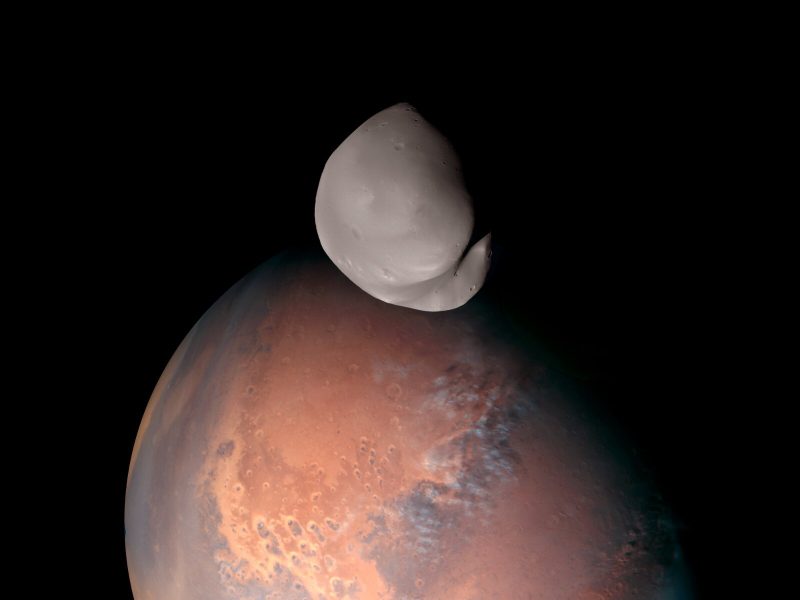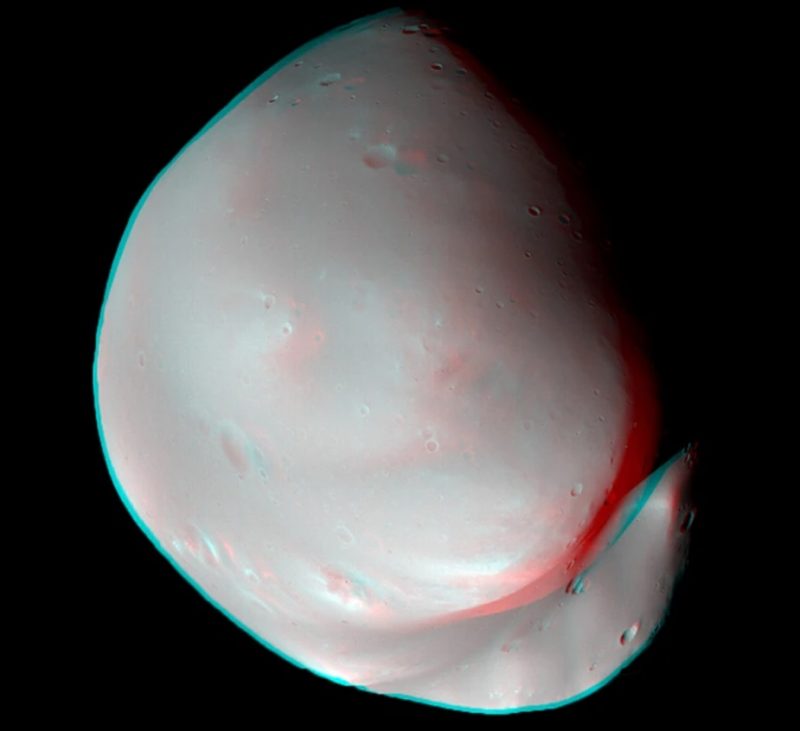
New Deimos image shows moon’s far side
In 2020, the United Arab Emirates (UAE) launched a mission called Hope to Mars. Hope began orbiting the red planet in 2021, studying its atmosphere and features. And – on April 24, 2023 – the UAE shared new Hope images of Mars’ moon Deimos at the European Geosciences Union’s general assembly in Vienna, Austria. The images show the far side of Mars’ smaller moon in high resolution, for the first time ever. They lend weight to the theory that Mars’ moons aren’t captured asteroids, but formed along with the red planet. And they provide a tantalizing view of a little moon on which humans might someday stand.
Mars’ moons are tidally locked to Mars, just as our moon is with Earth, always showing us the same face. Therefore, previous missions to the red planet in a low orbit would look at Deimos from Mars’ perspective, always seeing the same face that any Martians would see. But Hope is looking – from an outsider’s perspective – down on Deimos with Mars below. Hope’s unusually high orbit – 25,000 miles (40,000 km) above Mars’s surface at its highest point – allows for this different view.
Revealing the moon’s backside
Sarah Al Amiri, the Minister of State for Public Education and Advanced Technology for UAE, shared the new image on Twitter. The Hope spacecraft was 62 miles (100 km) away from Deimos when it captured the new images. Check out the videos below.
The observations ware made possible during close flybys which saw Hope pass approximately 100km from Deimos. pic.twitter.com/74hn2TU7w4
— Sarah Al Amiri (@SarahAmiri1) April 24, 2023
Captured asteroids or planetary formation?
Mars has two petite moons, Phobos and Deimos (Panic and Terror). Phobos is the larger of the two at 16 miles (26 km) wide. Deimos is smaller, with its longest axis spanning about 10 miles (16 km). Because Mars and these tiny lumps border the asteroid belt, astronomers have long thought they were captured asteroids. However, they have nearly circular orbits around the Martian equator, which would instead suggest that they formed along with the red planet.
On March 10, 2023, Hope flew above Deimos and Mars, scanning the pair with all three of its instruments. The images, taken in the spectrum of infrared to the extreme ultraviolet, show the surface of Deimos is closer to Mars’ composition than that of asteroids. Deimos lacks the carbon-rich rock typical of asteroids.

Bottom line: This Deimos image shows the far side of Mars’ smaller moon in high resolution, for the first time. In fact, astronomers believed Mars’ moons were most likely captured asteroids. But the Hope spacecraft reveals a possible planetary origin.











